‘Help your mob’: The psychologist building an ‘army’ to tackle Indigenous suicide
She grew up in the only Aboriginal family in a remote Pilbara mining town – now, Tracy Westerman is fighting for the lives of at-risk youth across Australia.
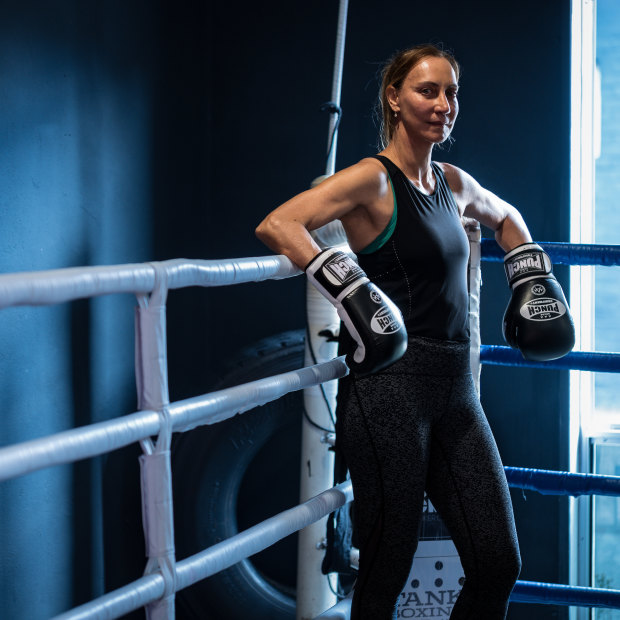
“If you haven’t pissed people off and you’re an activist, then you’re doing it wrong,” says Westerman, who boxes to release stress.Credit: Pic:Tony McDonough/Raw Image
Inside a boxing studio, a slender woman leans on the ropes while her coach wraps bandages on her hands before the gloves go on. Tracy Westerman has just flown back to Perth after a gruelling week addressing judges, police officers and child protection workers in different states, and it’s time to de-stress.
Wham, pow, whack! “Right glove under the cheekbone – yeah, then arm straight out,” instructs her coach Daylan Waetford as Westerman pummels a punching bag. “She is always on a plane,” he tells me later, “but she messages me when she lands and asks to come in for a session. For 40 minutes, she can just focus on one thing.”
Westerman also loves to run marathons. “I’ve made my biggest life decisions on a run,” she says. Watching her ringside, you sense these boxing sessions are a release from pent-up frustration. “I’d probably get hurt if she hit me in the wrong place,” Waetford says, only half-joking. “Tracy can definitely look after herself.”
She’s done it all her life, as the Aboriginal bush kid teaching herself through distance education, and later the child welfare worker witnessing Indigenous families knocked down by the system she worked in. It spurred her on to graduate as the first Indigenous recipient of a combined master’s and PhD in clinical psychology, and then to open her own mental health consulting business for First Nations people. All the while, she’s devoted every spare waking hour to creating her own charity, called Jilya, which supports more Indigenous psychology students with scholarships around Australia than any single government-funded organisation. Her singular achievements are a source of pride, but not so the current state of her profession. She’s capable of delivering no-holds-barred blows that leave a few of her colleagues reeling.
“When at least 50 per cent of clients in mental health, justice and child protection systems are Aboriginal, how much longer can psychology continue to neglect the needs of Aboriginal people?” she wrote recently. “I am a proud psychologist, but the profession needs to own that our entire evidence base is predicated on cultural exclusion and that this continues as denial, causing incalculable harm. We are a world that does not like difference, and it is literally killing my people.”
Bam! Thwack! It’s hard to argue with such statements, needling and emphatic, when in the week we meet in Perth, an inquiry heard how 16-year-old Aboriginal boy, Cleveland Dodd, repeatedly told warders in the “youth detention unit” of a Perth maximum security adult prison that he would kill himself. Left alone, and without access to any psychological care, he eventually did.
Westerman rails against the “one-size-fits-all, monocultural evidence base” of much of Australia’s psychology practice. “A fundamental truth was drilled into me during my training: if you get assessment wrong, you get treatment wrong and you make things worse.”
The nation, she says, lacks Indigenous-specific, data-driven content in its psychology training. “Instead, we have a side order of cultural awareness – or ‘we had an Aboriginal person do a lecture’ paternalism.”
At 54, Westerman is about to add “author” to her achievements. She’s written a book, titled Jilya: How one Indigenous woman from the remote Pilbara transformed psychology, which she describes as “a story of love for my people, and why I built an army of psychologists for them all”.
These are big claims – a one-woman crusade transforming psychology and building an army of experts? But Westerman sits comfortably with her assertions, and she is backed by another army of devoted supporters, including singer Troy Cassar-Daley, former Labor leader Kim Beazley and journalist and Wiradjuri man Stan Grant, who will host a conversation with her at the Sydney Opera House next month. “Tracy Westerman makes us human and whole – read this and be better,” writes Grant on the cover of her book.
As the boxing session wraps up, Waetford makes a telling observation about his client. “As a marathon runner, Tracy’s used to moving forward. Her movements are only forward – I tell her that in boxing, you have to take a step back occasionally to take a breath and assess the danger. But Tracy will always remind me, ‘I never step back.’ ”
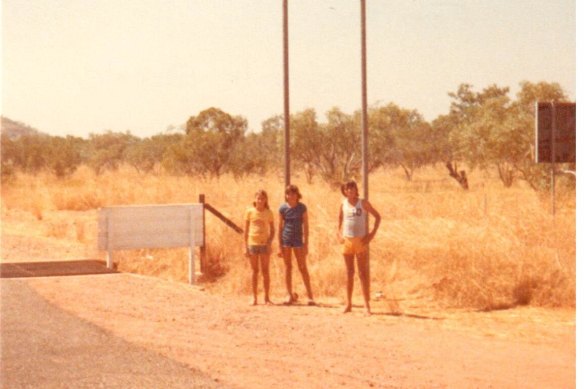
Tracy Westerman (left, with siblings Lynette and Michael) grew up in WA’s Pilbara. She took distance learning after the “culture shock” of six weeks in Perth, having never crossed a busy road before.Credit: Courtesy of Tracy Westerman
Westerman is still in sporting gear when I visit her in her two-storey home in one of Perth’s best postcodes. She supervised a major renovation herself, another DIY project shoehorned into an intensely busy life. The pool and huge TV den are often overflowing with family gatherings, but the house doubles as a home office for her business, Indigenous Psychological Services, and her charity, the Westerman Jilya Institute for Indigenous Mental Health.
Over my coffee and her green tea, she explains that the fees she earns from running workshops and psychology training are a means to an end. That end is Jilya, meaning “my child” in Westerman’s mother’s Nyamal language, the charity she effectively started in 2018 when she put her hand in her own pocket to fund the first $50,000 scholarship for an Indigenous psychology student. It was prompted by sheer frustration.
Back in 2016, only eight years after a coronial inquest into 22 Indigenous suicides in the Kimberley, she gave evidence to a West Australian parliamentary inquiry into another spate of suicides by Aboriginal youngsters. “When an Aboriginal child dies in Australia, 27 per cent of them will do so by suicide. That is more than four times the rate of non-Aboriginal children.”
‘What if the reasons Aboriginal people were dying by suicide were different to those for non-Aboriginal people?’
Tracy Westerman
Summing up her inquiry evidence, Westerman says she interviewed 130 at-risk Aboriginal youth for her PhD and created what she describes to Good Weekend as “the first unique screening tool for Aboriginal youth, the Westerman Aboriginal Symptom Checklist [WASC]“, and another version for adults.
“Every [Indigenous] community I had been into at that point kept telling me that there were ‘no warning signs’ when someone died by suicide or made a suicide attempt. But what if the reasons Aboriginal people were dying by suicide were different to those for non-Aboriginal people? What if the entire mental health industry misunderstood the risk factors?“
Her research told her that, unlike many non-Indigenous people for whom depression is a build-up to an act of suicide, impulsivity can play a key role in Indigenous communities. “With Aboriginal people, there can be different risk factors, with impulsivity and anxiety accounting for 64 per cent of suicide risk,” she says.
“You have intimate relationship breakdown and then you lack the capacity to self-soothe, which is very common in attachment disorder or people who have suffered trauma from separation. Then there’s alcohol and drug use as an enabler because they have no other way of soothing, and then bang!”
The inquiry requested copies of Westerman’s suicide risk assessment tools but ultimately did not endorse them. Two years later, a coronial inquest was opened to investigate yet another series of suicides, this time involving 13 young Aboriginal people (including two sisters, aged 10 and 13), again in the Kimberley region.
“Almost none of these 13 children had had a mental health assessment. That just broke me. The inquest came out with recommendations filled with the usual stereotyping of bereaved Aboriginal parents,” she says, with a fierce expression her coach Waetford describes as “Tracy’s I’m-going-to-get-you look”. “It called for [takeaway] alcohol restrictions and more money to assess FASD [foetal alcohol spectrum disorder], despite none of the young people having been diagnosed with it. There were no recommendations about improving [face-to-face] mental health assessments. How can you prevent suicide if you can’t assess someone properly?”
The seed had been sown for Westerman. “I want to build an army,” she told a First Nations radio interviewer in 2019. “I want hundreds and hundreds of Indigenous psychologists in every part of this country, so never again will a child die by suicide on our watch due to a lack of access to services.”
Her first scholarship went to a student in WA, “then very quickly South Australia said, ‘What about us?’ and it grew.” In five years, Jilya Institute has funded 55 students in different levels of psychology courses at universities around the nation. “We’re getting people into psychology from our highest-risk communities like Alice Springs and Cherbourg. Not one person has dropped out so far, and it has been achieved without federal government support,” says Westerman. “Just imagine if we had 30 Indigenous psychologists in Alice Springs, you wouldn’t have youth curfews, you’d have people capable of complex therapies that governments have failed to fund and provide.”
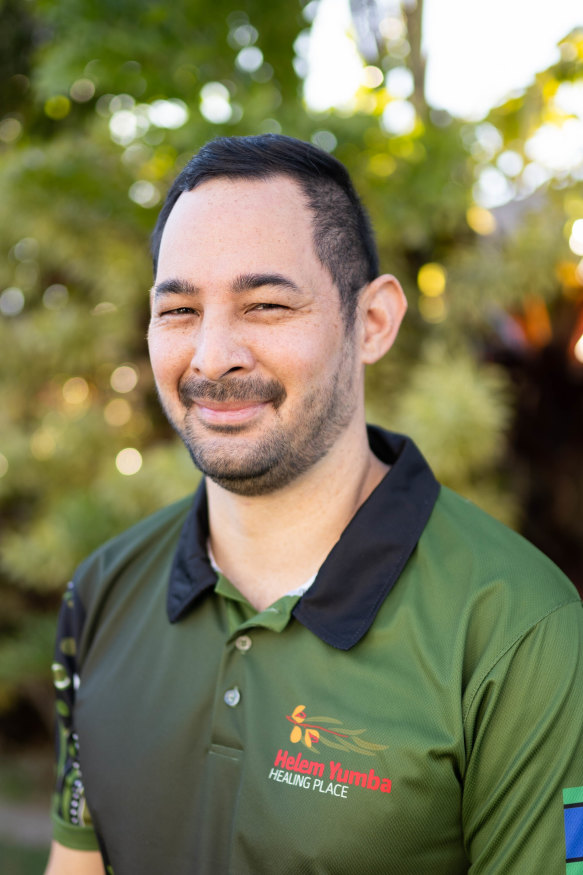
Being accepted was a “massive confidence boost” for student Thalep Ahmat.Credit: Courtesy of Tracy Westerman
Funding for $2 million in scholarships, plus administrative costs, has come from sources as varied as Paul Ramsay Foundation, which recently pledged $4.3 million over three years, to annual fundraising concerts by Fremantle-based singer-songwriter John Butler. “This isn’t just about students getting cash,” says Westerman. “They get personally mentored, have a student conference once a year and join a student hub. If they need a cuddle, we cuddle them; if they need academic support, we get that to them.”
Every one of them, she says, comes from a traumatic background. “We don’t select people based on grades but on how many gaps they have to close. So if we have a kid from Sydney getting distinctions, we don’t pick them. If we’ve got a kid from Halls Creek that’s got Cs, we pick them,” she says. “They have to either come from a high-risk community or go back to one and work clinically. We do a conversation around mob and connection, and they need a reference from someone who says they’ve worked with Aboriginal people and do a great job. We have the first future Indigenous male psychologist from Halls Creek; the first Indigenous psychologists from Tasmania, from Mount Isa. Two Indigenous LGBTQI psychology students – the first [openly] in Australia.”
By the end of this year, Jilya will have also supported 12 master’s degree graduates into clinical psychology. Westerman calls her students “the Jilya family, or #buildanarmy. A bit like the Mafia, you can join but you can’t leave,” she adds, grinning.
The emerging “army” of 55 is an impressive feat when compared with the total number of Indigenous psychologists in Australia of about 230 (out of about 38,000 psychologists). “To my knowledge, we’ve never had an Indigenous psychologist based in the Kimberley, right? With the highest rates of child suicide? We’ll have six graduating and ready to go back there.”
‘If we can get more Indigenous people to help our mob, you can show people things can be different.’
Psychology master’s student Thalep Ahmat
Westerman sends me half a dozen student names – Tex from Halls Creek, Cody from Adelaide – and urges me to talk to them all. The ones I speak to are indeed remarkable. Take Thalep Ahmat, a father-of-two with links to the Badulgal people on Badu Island in the Torres Strait. He worked as a boilermaker for Queensland Rail, “then the workshops closed down, and I went into domestic violence support work, which I loved”.
He applied for a Jilya scholarship, “but I never thought I’d be accepted – I didn’t do well in high school, so the scholarship was a massive confidence boost”. Ahmat is now set on completing a master’s degree in psychology: his dream is to work in communities around Rockhampton “like Woorabinda, which is struggling but strong and resilient. If we can get more Indigenous people to help our mob, you can show people things can be different.”
Another Jilya scholar is Erica Harvey, from the NT, who is raising her three-year-old son, studying and working in Darwin’s adult prison. “I met Tracy on a training course, and she said, ‘Apply for a scholarship.’ ” Harvey’s interest was piqued by prisoners telling her they were keen to work on their problems, but preferably with an Indigenous person. “I can relate in many ways,” she says.
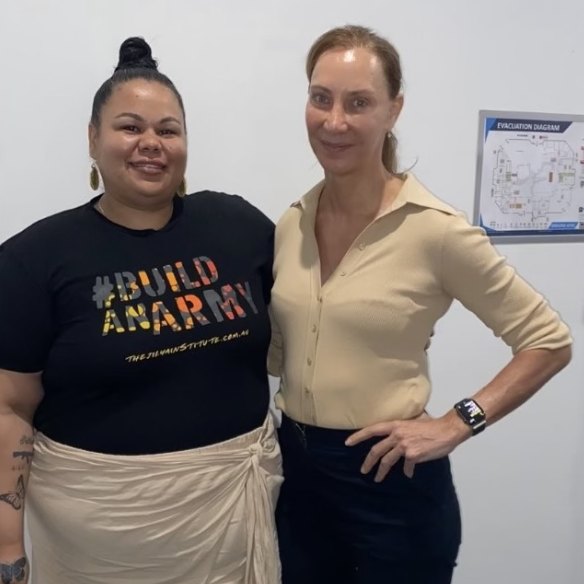
With Jilya scholar Erica Harvey, who calls Westerman “an idol”.Credit: Courtesy of Tracy Westerman
Juggling study in her first semester was tough, as Harvey struggled with the grief and obligations of several family deaths. “The Jilya team had my back, and now I’m doing really well. I definitely want to go back and play a role in my community. My dad said, ‘Come back home and help your mob.’ ”
“When I first met Tracy I was in awe,” adds Harvey. “I thought, ‘Who is this lady?’ You hear about the barriers she’s overcome. She’s definitely an idol of mine.”
Westerman, like the word jilya, comes from the Pilbara region in WA’s north-west, where she arrived in 1970 as the last of five children. Her mother went into labour in Carnarvon during an outdoor cinema showing of To Sir, with Love, starring black actor Sidney Poitier. “During my childhood I never heard the end of it – that Mum never got to watch the movie as a result!”
If Westerman’s book is a call to arms over the treatment of her people, it’s also a moving tribute to the gift of her family upbringing. Her mother, Mavis, is a Nyamal Pilbara woman who, under former native welfare laws, only received Australian citizenship in 1964. Westerman says it required her to attend a Port Hedland court and swear she had severed ties with traditional culture and was “civilised” in her behaviour. “Mum was on the lowest rung of the ladder,” she says.
Mavis met and married Mick Westerman, the son of a hard-drinking Scottish migrant who ended up dying as a vagrant in someone’s backyard. Mick had headed north in his 30s with a swag and belongings in the back of his ute. He and Mavis worked on pastoral stations as shearer’s cook and general hand.
Westerman’s face softens visibly when talking about her adored father. “Dad found salvation in Aboriginal people. Way before he met my mum, he didn’t take wages because Aboriginal people on stations weren’t paid. He took room and board essentially.”
Aboriginal people soon claimed him as a “white blackfella”. “They embraced Dad and decided that Mick Westerman was a loner who needed a dog, and the local copper happened to have a litter of pups.” To Mick’s surprise, instead of a hardy cattle dog he was handed a tiny cocker spaniel pup he called Bobo. “My dad was carved out of granite, a tough-looking man with tattoos up his arms, but he had an incredibly soft side to him. His dog represented that.” (Westerman cherishes her own cocker spaniel, called Jilya, as a reminder of her father who died of cancer, aged 60, in 1996.)
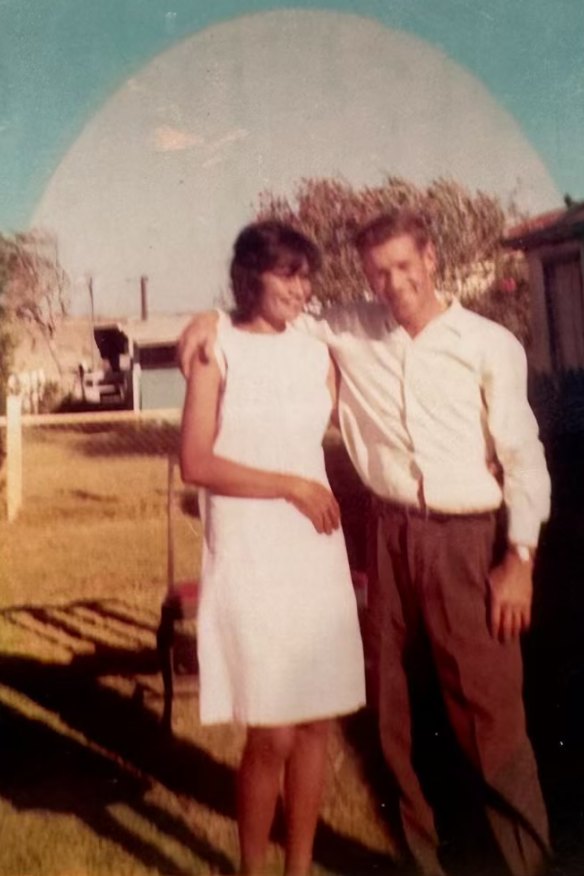
Westernan’s mother Mavis and dad Mick.Credit: Courtesy of Tracy Westerman
The Westerman family’s beginnings in the early 1970s were spent at the inauspiciously named Useless Loop, a salt-producing township near Shark Bay, “in a tin shack that Dad built”. The next move was to Tom Price, a remote Pilbara mining town built for the iron ore boom; the move gave them their first proper house but also the uneasy distinction of being the first Aboriginal family in town. “Mum says now that people would look straight through her, but she just swallowed the racism because of the fear of one of us being removed.”
Young Tracy was taught to read and write by her older siblings before she started school. The bright student was sent away to study in Perth but lasted only six weeks. “It was culture shock – I’d never even crossed a busy road before. I came back for the Easter holidays and said, ‘I’m not going back!’
“I had to educate myself through high school with distance education and, with no one on either side of my family having seen the inside of a university, it’s fair to say the odds were firmly stacked against me.”
In her early teens, she writes in Jilya, she had picked up a book that described what a psychologist did. She’d never met one, “but I was always naturally curious and decided it would be my life’s calling”.
Had she sensed that psychology might shed light on the emotional forcefield that swirled around the family? Or on her mother’s heightened anxiety about fitting in? “You’re right, I was drawn to it,” Westerman says. “All five of us kids have this basal level of anxiety, right? My brother Michael and I talk about it, how we can’t do things in half-measures and that’s anxiety-filled.
“Our house was scrubbed clean like a hospital, from one end to the next. I often talk about Aboriginal people teaching their kids to ‘act white’ as a mechanism, and we normalised it. You either wanted to slip under the radar or overperform – my sister was a state softball and tennis player, we were all academic achievers. We were always aware that we were the only Aboriginal family in the town. It manifested itself in us always having to be better than everybody else.”
That personal story often surfaces, as when a week later she stands in front of an audience of workshop attendees in a hotel conference room. “My lived experience helps my practice,” she tells them. “I can say, ‘This happened to me.’ There are four stages of black identity formation, and for me I was a kid in the classroom ashamed of being black … Mum cleaned at my school, and I was embarrassed because I had a black mum.
“That’s the first stage that every black person goes through. I see a lot of black kids, even adults, with identity problems. They reject their own culture – ‘I don’t want to be one of them’ – because the world reacts differently to blackness.”

Westerman: “A fundamental truth was drilled into me during my training: if you get assessment wrong, you get treatment wrong and you make things worse.”Credit: Tony McDonough
Her hectic monthly schedule will involve Westerman addressing rooms like this across Australia: magistrates one week, social workers and police the next. Her record is one workshop each day in four different states. The attendees – or their employers – pay about $480 a head to hear Westerman teach topics such as “cultural competency” or “perspective-taking empathy training”.
“In police courses, we’re trying to get them to develop empathy for blackness, essentially,” she tells me. “You have to get people to recognise their over-reactivity to blackness. When African American George Floyd was murdered, he didn’t die because the white police officers lacked conflict resolution skills, but because they saw blackness as more threatening than what it was.” She says the 2019 shooting of Kumanjayi Walker by an NT police officer was another case of overreacting to a black man’s perceived threat.
In one workshop exercise, Westerman shows a video clip of former prime minister John Howard explaining why he declined to apologise for the stolen generations era, the mass removal of children from their birth families. He said he didn’t believe one generation should accept responsibility for an earlier generation’s actions, and some children had been removed “for good reason”.
“I get the group to rate their reaction to what Howard says from one to 10, one being no reaction,” says Westerman. “Then I show an excerpt from the film Rabbit-Proof Fence.” Based on a true story, Phillip Noyce’s 2002 film shows Aboriginal girls Molly, Gracie and Daisy being forcibly grabbed by a police officer and crying for their mother and grandmother, who collapse in the dust as the children are driven away.
“I don’t say anything, I let the emotional reaction happen,” says Westerman. “Then I show John Howard refusing to apologise again. What shifted?”
In the session I attend, the shift manifests like an emotional ripple through the room. One Indigenous man, who says he works “in a secure facility”, is close to tears. “It’s grief around a missed opportunity to fix things,” he says. A female social worker adds: “We’re repeating this stuff and it makes me physically sick.”
“It’s not that people don’t care, they can feel really bad about it,” says Westerman. “But the compulsion to do something about it is what perspective-taking empathy means.”
Empathy works both ways, she tells the audience. She describes living as a young woman with her brother Michael in the gold-mining town of Kalgoorlie, “the most overtly racist place I have ever lived in”. Michael was studying at the School of Mines (he now runs a mining operation overseas) while she was starting her first job as a child welfare officer.
On her caseload, she had 24 Aboriginal kids “who had never known a white person to be kind to them”. She needed a strategy to tackle their hostility, “so I would construct social environments in which some of my white friends and colleagues would hang out with them – otherwise known as ‘rent-a-whitey’,” she tells her audience, provoking a few laughs. “I would be very deliberate in my language around them. ‘See that whitefella over there? He’s really a nice fella hey.’ This would create a ‘white person, very kind, does not compute’ scenario, in which ingrained cognitions – such as ‘all white people are racist’ – could be internally challenged by exposing them to the very thing they did not agree with.
“Finding humour in racism might sound strange, but racism is so illogical, it’s often easy to laugh at it.”
‘I’ve offered these tools for free, but the Department of Justice has never even had a conversation with me.’
Tracy Westerman
Westerman considers her most serious work is training practitioners to assess suicide risk by using her psychometric tools. She estimates that she has personally trained more than 50,000 individuals over the past two decades; these days, participants pay $4428 for a four-day course and an ongoing $300 subscription for use of her WASC tools.
“People get taught, step by step, to respond to high‑risk Indigenous people. Yet universities and governments have ignored them and refused to fund their rollout into high-risk communities. These same universities will claim they have Indigenous content that’s clinically informed and data-driven. It’s not, and they need to stop lying about it.“It takes 20 minutes to screen an Aboriginal kid for risk. I’ve offered these tools for free, but the [WA] Department of Justice has never even had a conversation with me.”
Wham! Such declarations provoke eye-rolling and pursed lips when Westerman’s name is raised in certain circles. “I’m very direct in my communication,” she says. “I was raised that way. There’s nothing tricky or manipulative; I am who I am. People don’t like that.”
I tell Westerman that I scanned the attendance list for her workshop and it included individuals from the state premier’s office, child protection, state health department, a big mining company and not-for-profit charities. Does that match with her repeated assertions, outlined in her book, that she is snubbed by organisations, especially in her own state?
“Yes, the public training workshops in Perth are always pretty booked,” she concedes. “But that’s very different to an entire organisation seeking my expertise to change the way they deliver services to Aboriginal clients and communities, and to guide their staff around best practice. I haven’t had a private contract for this type of work in WA since 2019, so I spend half my life on a plane – the love I get across this country is massive.”
She cites a case of exclusion in 2018. “They held the World Indigenous Suicide Prevention Conference in Perth that year, when I was selected as West Australian of the Year for my work in suicide prevention. I didn’t get an invite.” (Good Weekend has been told by a conference source that this was an “oversight”.)
University of Western Australia’s Professor Pat Dudgeon, the first Aboriginal psychologist to graduate in Australia, says the Jilya scholarships “are great, and they have made a huge contribution to psychology in Australia” – and that Westerman’s work “is an important step forward building on initiatives that have been in place for decades”.
Dudgeon insists the sector has made progress by forming the Australian Indigenous Psychologists Association in 2008, and launching a scholarship program that has supported 19 Indigenous psychology students since 2011. Thirty-four schools of psychology nationally have signed up to the Australian Indigenous Psychology Education Project “to increase student numbers and put Indigenous studies firmly” into the curriculum. Dudgeon adds that a formal apology was made by the Australian Psychological Society in 2016 “to acknowledge the profession’s culpability in eroding Indigenous culture”.
“Learn to step back,” Westerman’s boxing coach reminds her again, as she steps forward. A New Zealand-born Maori, Daylan Waetford says he can “totally get” Westerman’s drive to bring more Indigenous people into her profession. Each Friday, he buses in disadvantaged youngsters from outer suburbs to learn boxing. “I know they find it easier to relate to someone who shares the same skin colour or past experience.”
Westerman says that pursuing her goals has been punishing. “I don’t think anyone understands how relentless it’s been. Eight years of building Jilya, 18- to 20-hour days, and not a day off. I posted on LinkedIn a couple of months ago that someone from a high-up position said, ‘Tracy’s pissed people off, but you cannot fault her skills, her expertise and her passion for her people.’ And my response is that if you haven’t pissed people off and you’re an activist, then you’re doing it wrong.
“I’m actually very comfortable with the notion that I’m a disrupter,” she adds. “The simple answer is you can’t be a prophet in your own land, right? The better answer is that there’s not enough imagination in the world that an Indigenous woman from the Pilbara could possibly be the best in the world at something.
“The minute you’re too successful as an Aboriginal person, then you’re a snake-oil salesman or you’re about money. So the narrative around me has been ‘she’s always about money’, blah blah blah. It used to frustrate me, but now I think the universe had other plans for me. If everyone around the table is funded by government, then who is holding government to account? They need people like me to challenge them.”
Doing things the Westerman way has kept her focused on demonstrating “that anything is possible, for every Aboriginal person from the bush, with no educational or financial advantages; for all those who have been told that they are not smart enough or not black enough or too black, or for those simply struggling with voices around them of low expectations.”
She remains an optimist – “like my dad” – and believes in the possibility of “a future free of generational child suicides, incarceration and child removals”.
And, for the first time, Westerman says she glimpses a day when she might actually step back. “I can see that I can do less because our future is becoming assured – my Jilya students are absolutely brilliant, kind and committed. They are everything I hoped for and more.”
If you or anyone you know needs support, call Lifeline on 131 114 or Beyond Blue on 1300 224 636.
To read more from Good Weekend magazine, visit our page at The Sydney Morning Herald, The Age and Brisbane Times.